Duolingo has just added our newest, most advanced content yet for English learners! Learners in our 20+ English courses now have access to nearly 200 new units with lessons about sophisticated language situations, including doing job interviews, negotiating, discussing cultural and religious traditions, and giving advice.
The newly-designed English units cover the language proficiency levels B1 and B2 in the Common European Framework of Reference for Languages (CEFR), an international proficiency standard. Current Duolingo learners will notice an important difference: The new lessons don’t use translations!
Our teaching experts have developed exercise types that use English to teach English—just as might happen in the classroom. Translations are a convenient way to check learners’ comprehension, and they make developing new content using technology efficient and scalable, but learning entirely in English has real benefits. The new content gives learners the opportunity to use English as they would while studying abroad, working in an English-speaking country, or speaking English professionally.
Here’s everything you need to know about our new English lessons!
In this post…
What is B1 and B2 English?
What makes the new English lessons different?
How do you learn without translations?
Where can you find the new English lessons?
Why did we take on this challenge?
What is B1 and B2 English?
This content covers vocabulary and grammar at the CEFR levels called B1 and B2—the level needed to live and work in the language. With B2 English, learners can use the language spontaneously and confidently, and they can talk in nuanced ways about complex topics well beyond the immediate, concrete needs of beginners.
What makes the new English lessons different?
Our new English content is an immersive, no-translation experience: Learners complete exercises entirely in English!
This gives learners an opportunity to use their English to learn vocabulary and grammar in a naturalistic way in order to reach even higher proficiency levels.
Instead of translating from their own language to English, and the other way around, learners leverage context clues to level up their language skills:
- Vocabulary: Exercises use English words and phrases that learners already know to communicate the meanings of new vocabulary.
- Grammar: Lessons and exercises draw learners’ attention to exactly what they need to notice in order to understand tricky grammatical concepts.
- Help when you need it: When learners need a little extra support, they can still see hints in their own language.
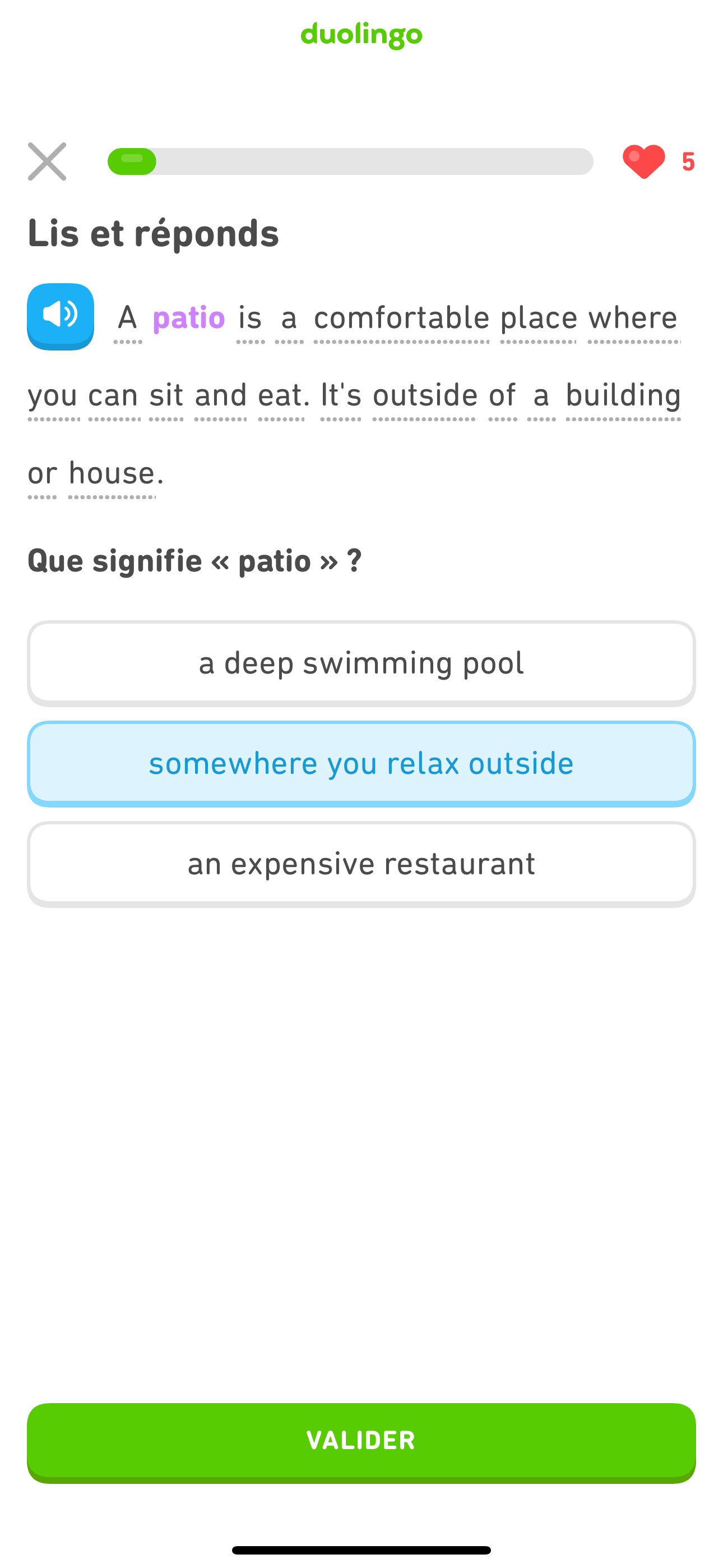 |
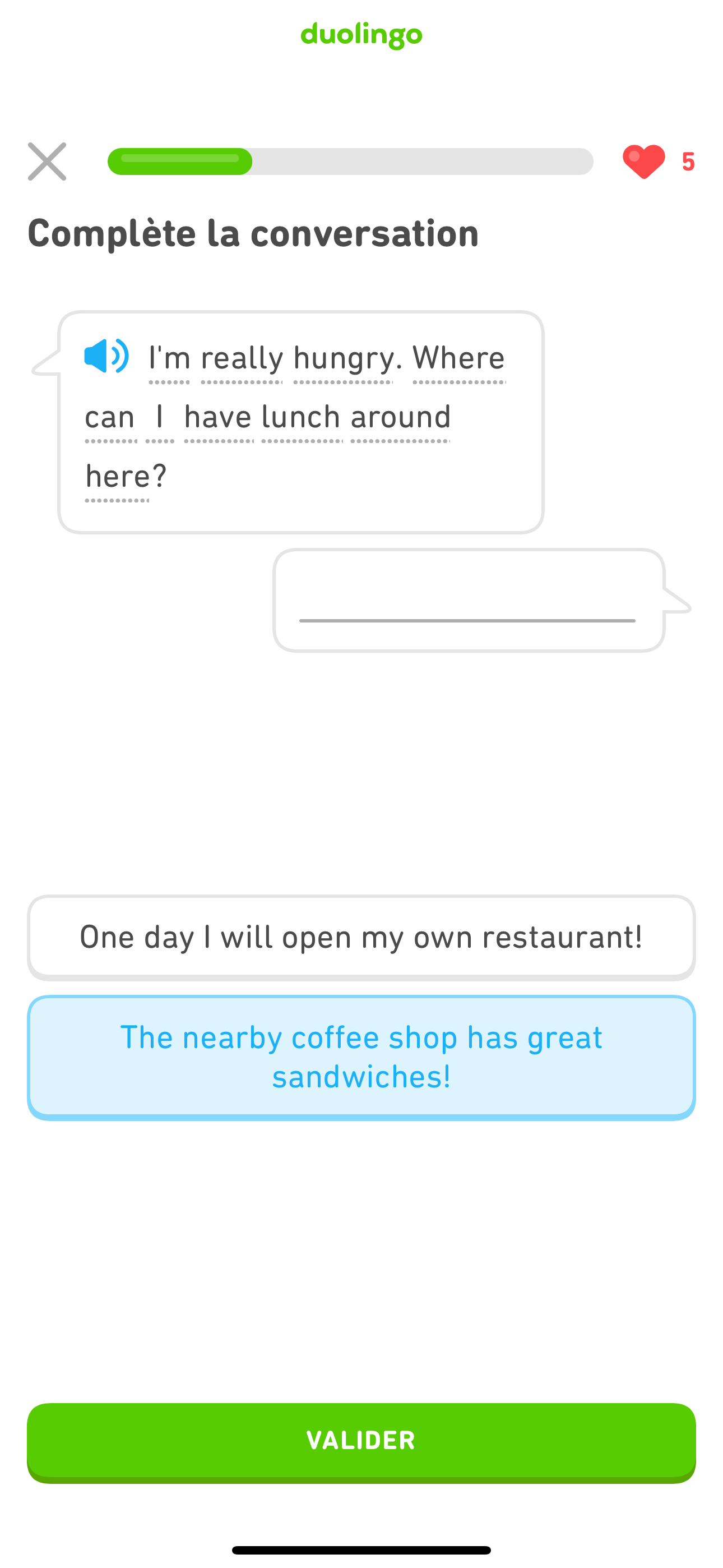 |
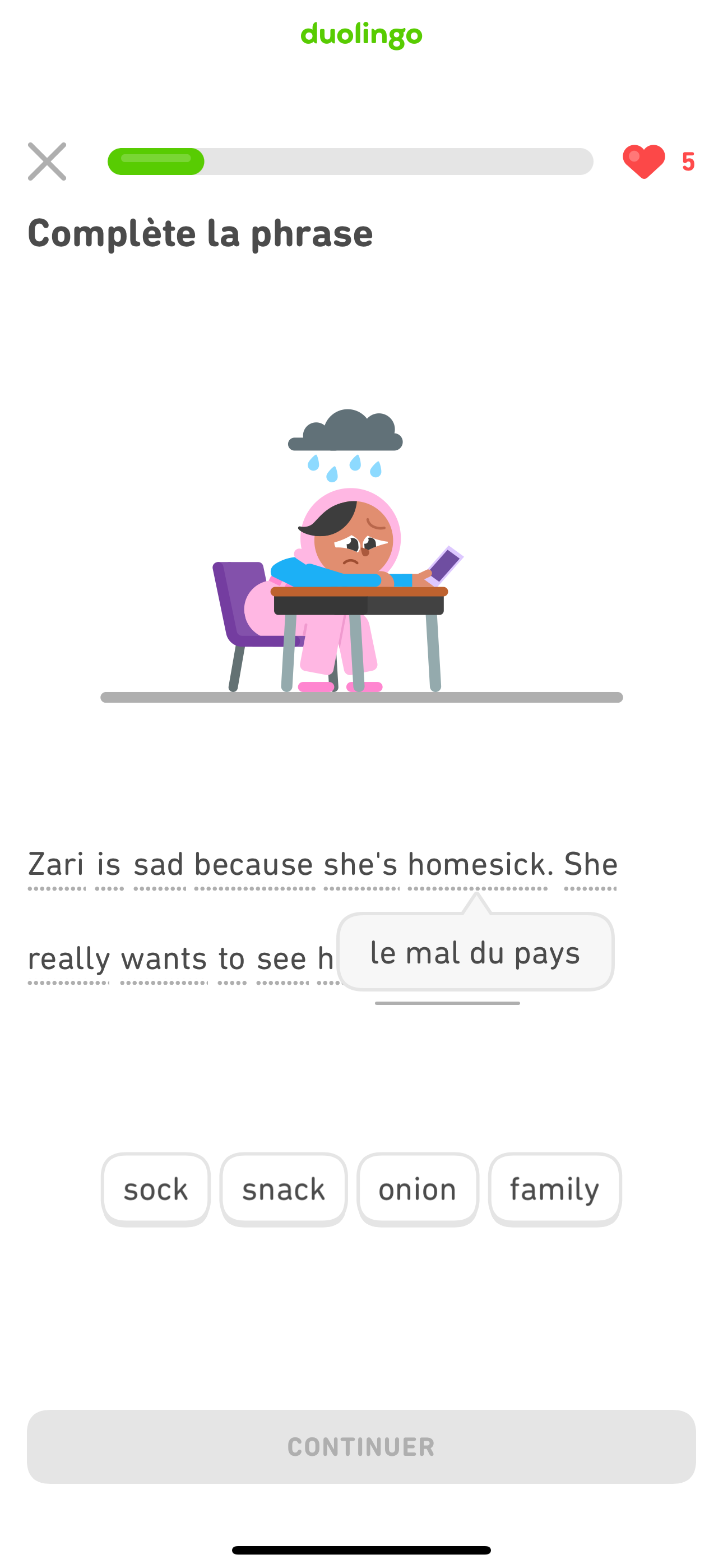 |
This new content style mimics real-life situations to provide learners with a naturalistic learning experience. The wide variety of exercise types also build reading, listening, speaking, and writing skills holistically.
How do you learn without translations?
Using English to teach English is easy to do in-person, but it’s challenging to do with technology! But this was important to solve: Learners need to build strong connections between English words and phrases and their meanings—without going through their first language to get there.
With Duolingo’s new English content, learners work in “English mode” to understand information and use context to learn meanings. This is also what is expected of university students in college lectures or employees in a meeting being briefed on a new project!
To create an all-English course that teaches new grammar and vocabulary and checks learners’ comprehension and usage, our teaching experts had to rethink the kinds of exercises we use in the course. Each of the new “monolingual” exercise types has a specific focus, for example, to introduce a meaning, show a grammatical contrast, or provide reading comprehension practice—using only English.
Where can you find the new English lessons?
The new English units are divided across four sections: Sections 5 and 6 cover B1 content, and Sections 7 and 8 include B2 lessons.
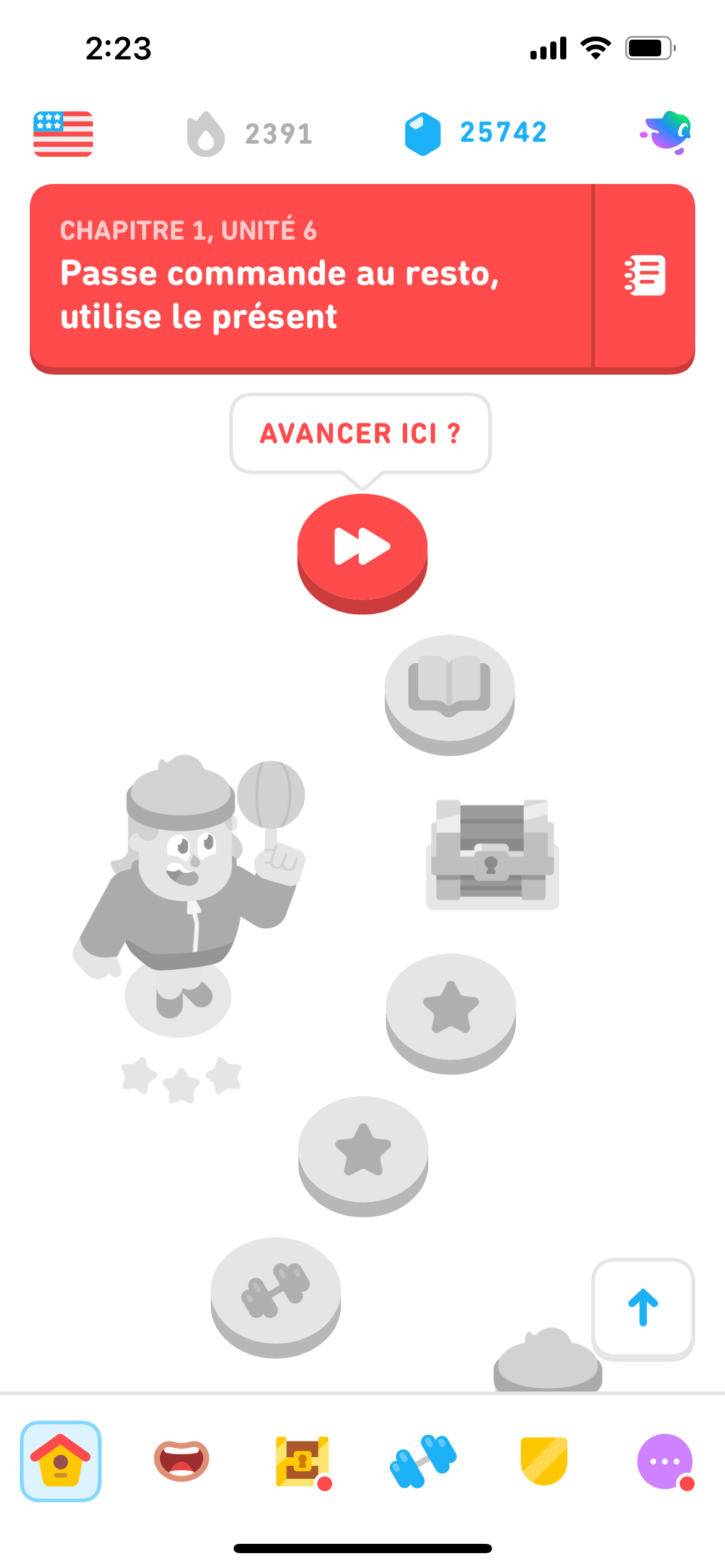 |
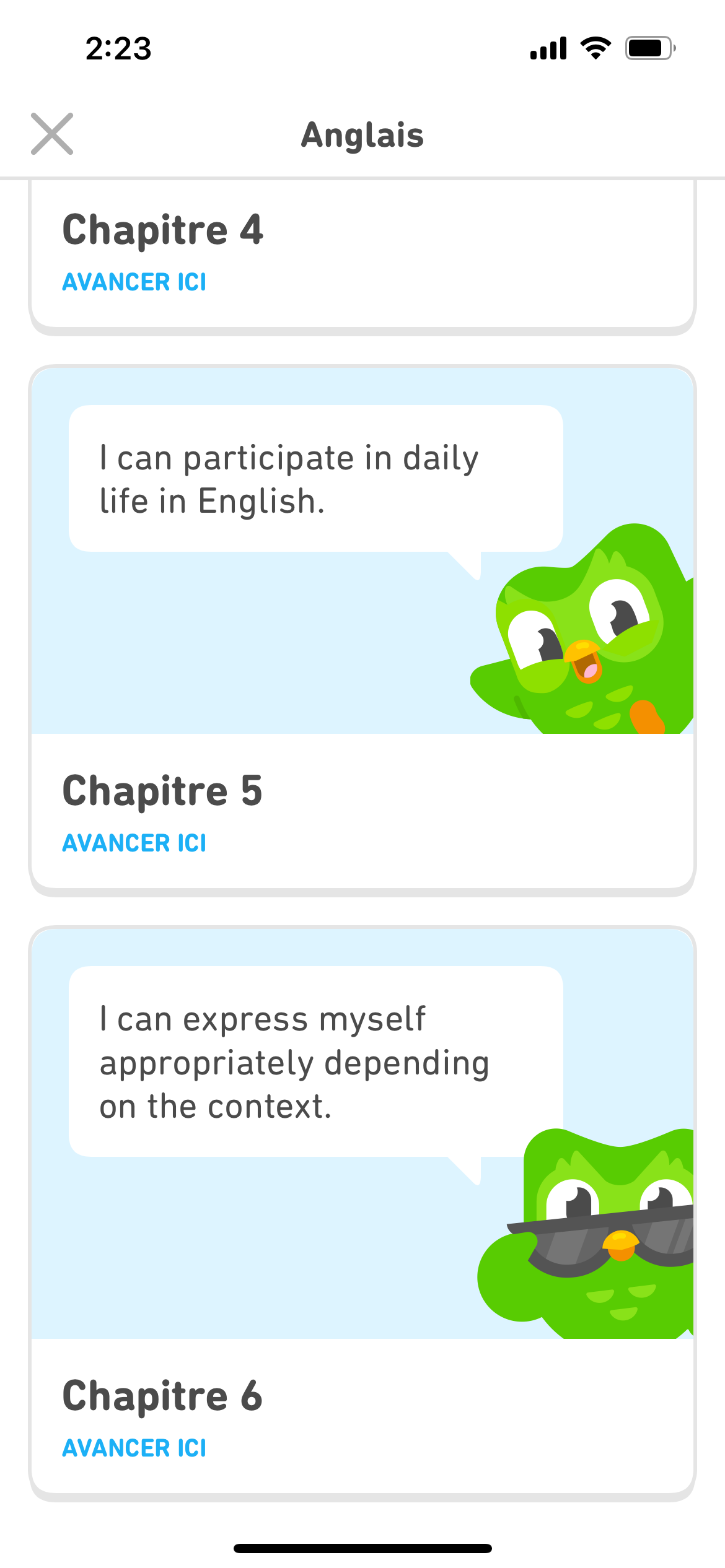 |
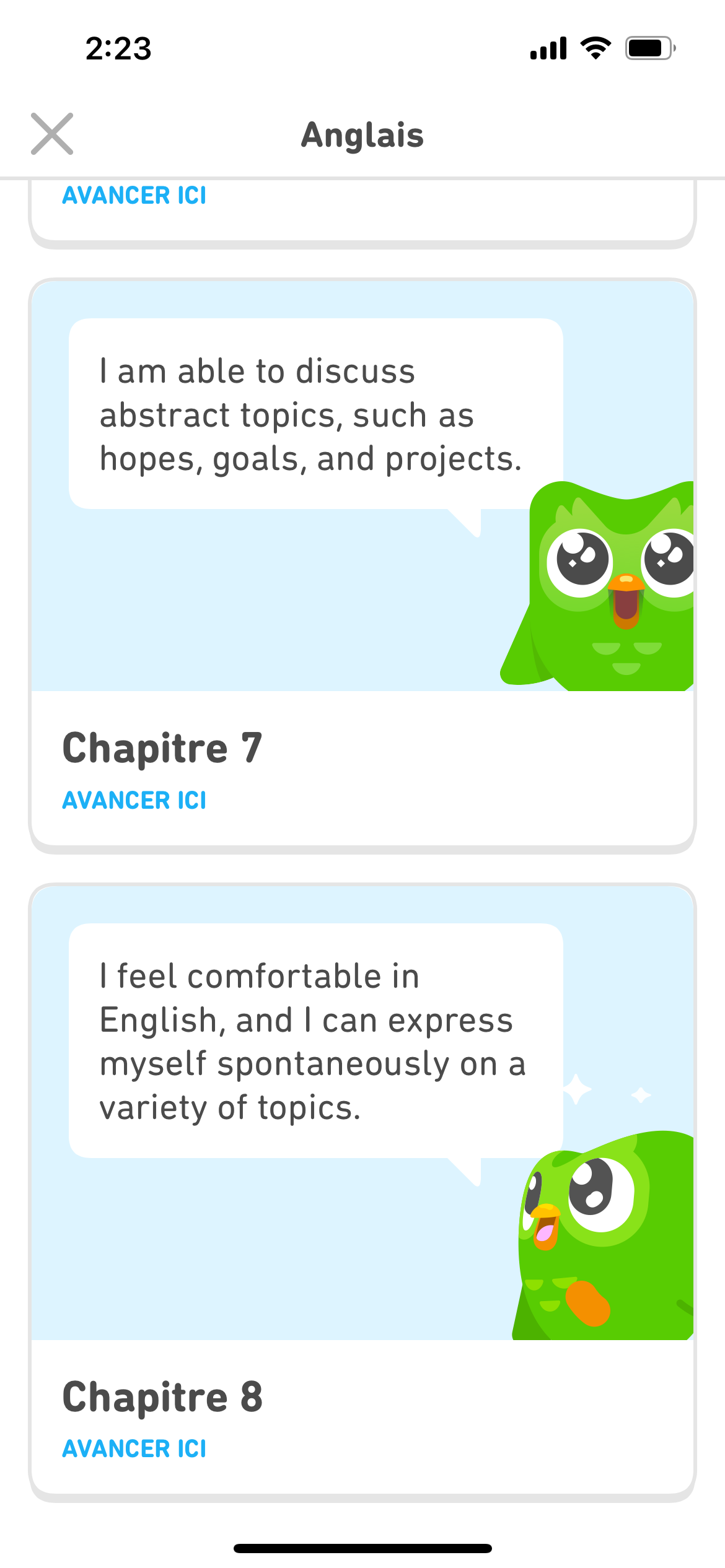 |
| Click on the section and unit heading (here, in red) to view all sections | Sections 5 and 6 cover B1 vocabulary and grammar | Sections 7 and 8 teach B2 vocabulary and grammar |
Hint: To see all the sections in your course, click on the box at the top of your screen that says the current section and unit—for example, “Chapitre 1, Unité 6: Passe commande au resto, utilise le présent.”
Why did we take on this challenge?
We built our new English content in response to the high demand for English on Duolingo. English is the most popular language studied on Duolingo—it’s the #1 language in 119 countries—and English proficiency often means greater career and educational opportunities. We want to do our part in opening those doors to our learners!
Focusing on one high-quality learning experience for English learners has also allowed us to scale faster: Now that this new content is designed and built, it can be introduced to the millions of learners in our 20+ English courses.
Advance your learning with Duolingo!
Stick with Duolingo for all the lessons, language tools, and support you need to reach your English goals 💚
